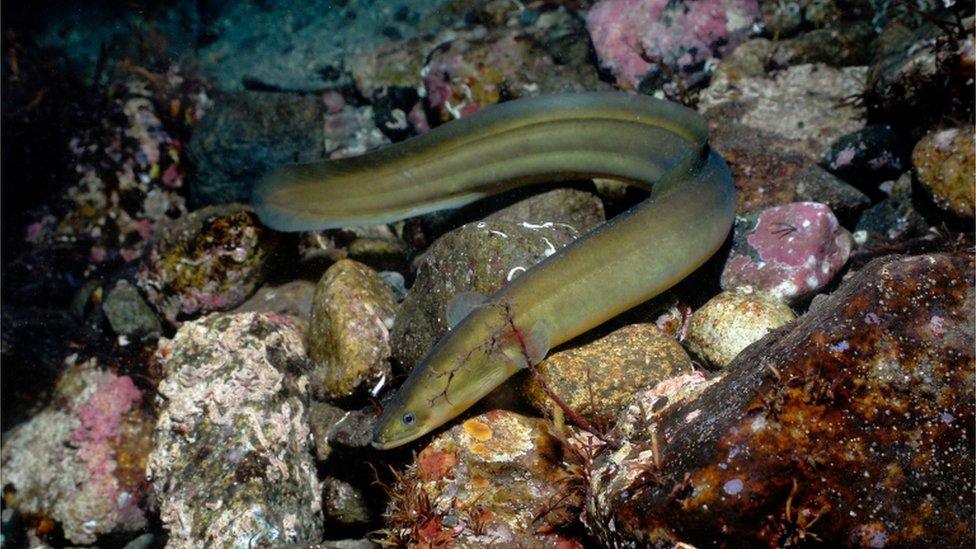Kennet and Pang eels survey highlights river barriers
- Published
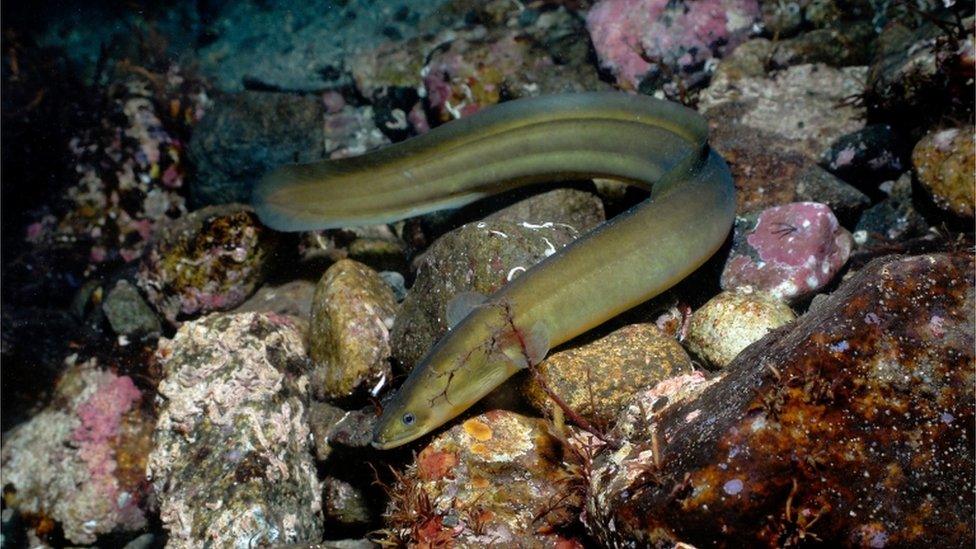
European eels are critically endangered
There are more barriers for endangered eels in rivers than scientists previously thought, a study has found.
Volunteers surveyed the Rivers Kennet and Pang in Berkshire to identify obstacles such as weirs hindering European eels from freely swimming to feeding sites.
Action for the River Kennet (ARK) said almost a third of the impediments discovered were not previously known.
It is hoped the data can help make waterways easier for eels to navigate.
European eels hatch 4,000 miles (6,500km) away in the Sargasso Sea, in the Atlantic Ocean before crossing the ocean and migrating up UK estuaries and rivers.
The eels need to swim freely up and downstream along rivers to find places to hide and food to eat in order to successfully grow. Mature eels then make the journey back to the Sargasso Sea.
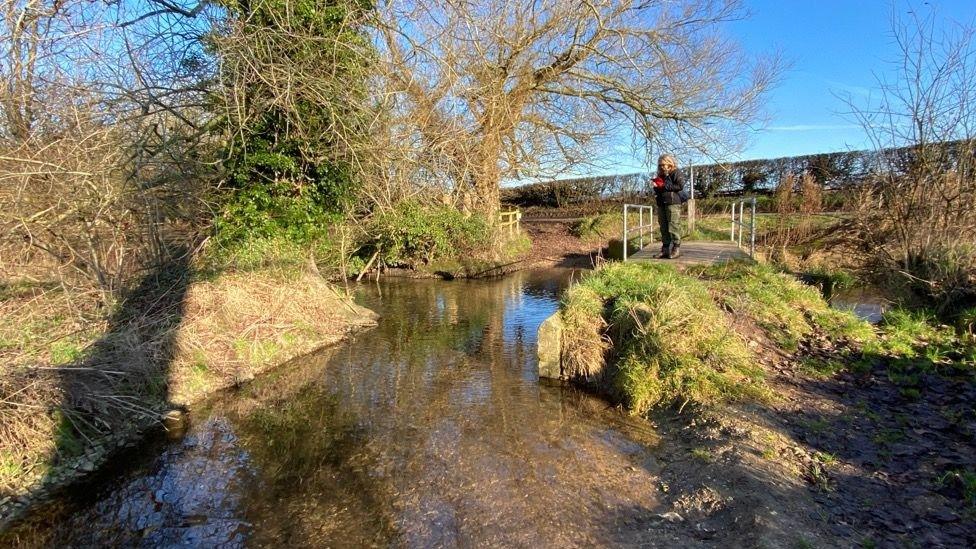
Volunteers surveyed the River Pang and River Kennet in Berkshire
During the pilot project, volunteers were trained by ARK to use a specially-designed app to identify and record barriers along 100 miles (160km) of the River Kennet between Reading and Hungerford and on the River Pang to assess how eels could pass.
Out of 221 barriers counted during the study, 78 were not previously recorded.
ARK said its findings were "bad news" for the fish.
Project officer Mia Ridler said: "The numbers of eels reaching our rivers is really low - there are lots of barriers for them stopping them reaching the fantastic habitats waiting for them in the Pang and the Kennett."
When the study is completed, the group said it would investigate measures such as removing weirs or adding in so-called eel passes, a gap with a gripped surface that allows eels to get through.

Follow BBC South on Facebook, external, Twitter, external, or Instagram, external. Send your story ideas to south.newsonline@bbc.co.uk, external.
Related topics
- Published30 August 2020
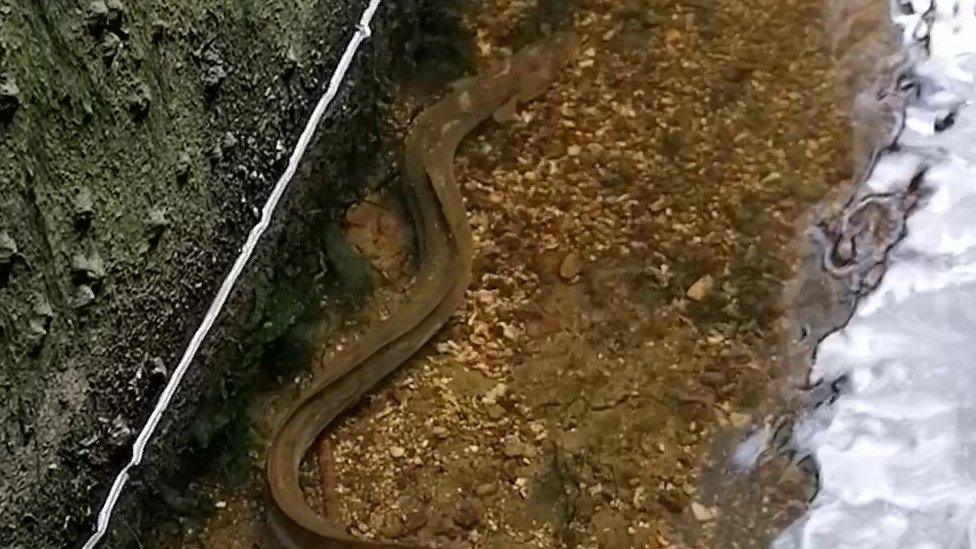
- Published10 March 2020
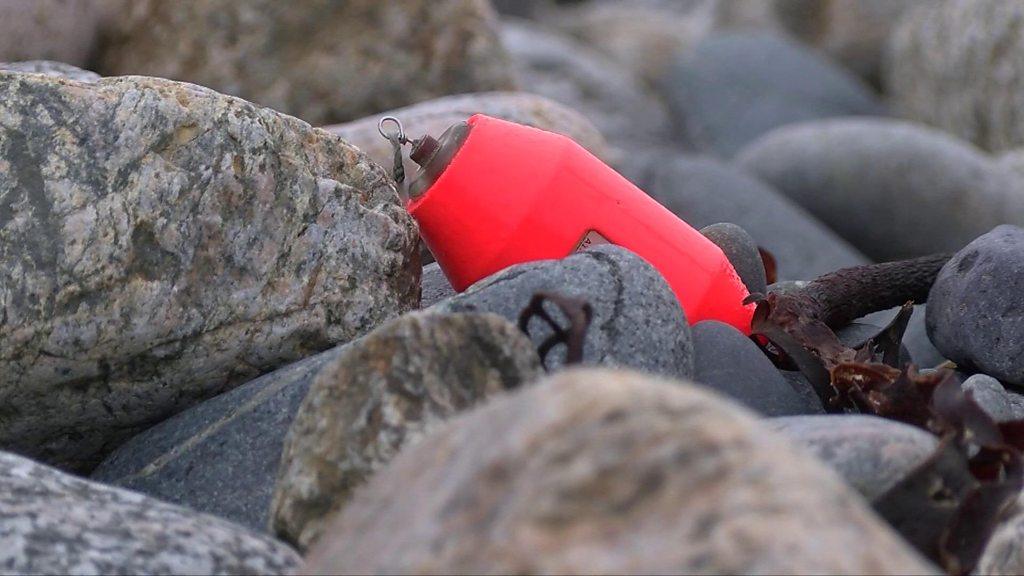
- Published17 May 2019
